![[SoundStage!]](../sslogo3.gif) The Traveler The TravelerBack Issue Article |
November 2002 A Quick Trip to the NRC
Still, despite the short distance, traveling to the NRC has its challenges when you own a Honda Civic and more than 50% of the loudspeakers you measure have to be carried there in your car. At least that’s the way it was for the first couple of years when we started our measurement program there. The routine We tend to measure speakers in batches of three to five -- it’s the most efficient way to do it because the chamber is oftentimes busy and I have to pre-schedule times (the NRC is a research institute, after all, and many things go on besides just the measurement of speakers). So when I know exactly which speakers will be in the next batch, I phone Rene St. Denis, our contact at the NRC and the fellow who actually does the measuring, and book a time. With SoundStage! slotted in for measurements, I usually spend the next few weeks planning exactly how the speakers will get there since they’re often arriving from all over the world. Sometimes they'll be shipped directly there, other times they come to my place first. Working like this, I usually end up making the quick drive to the NRC at least once a month. And more often than not when I arrived at the NRC in 2000 and 2001, my opening conversation with Rene would be about how I needed to sell my Civic because "it doesn’t have friggin' air conditioning and I can’t fit all these damn speakers in it!" Rene got to hear my on-again, off-again love affair with my '93 Civic -- the car that could get me to Toronto with on 20 bucks worth of gas, yet I’d roast all the way there like Swiss Chalet chicken, even with the windows down. Cars -- like high-end audio, fast food, and relationships -- are full of compromises.
Why You don’t really need an anechoic chamber in a research facility to produce loudspeaker measurements -- just like you don’t really need an operating room in a hospital to do some kind of surgery. But the fact is: If I’m going to lay my body on a table and let someone have it at, I’d rather it be in pristine hospital operating room with sterilized equipment and a team of trained experts and not have it be on somebody’s kitchen table in a house that looks something in the movie Deliverance with a group of good ol' boys who think they know how to get the job done. And while measuring a loudspeaker may not be as life-threatening as surgery, consider this: If your magazine is responsible for producing a set of measurements that purport to be accurate and are done in a rigorous enough fashion that they can be held up to scrutiny, why not do them right? It seems simple enough to us. So we went first-class, and that’s precisely why we chose to do it at NRC -- a loudspeaker testing facility with a real anechoic chamber, properly calibrated equipment, and decades of experience measuring loudspeakers. The process Every speaker -- from those lowest in price to highest -- gets measured in the exact same way with the exact same care, and in the anechoic chamber of course. But before we go any further, it’s best to understand what an anechoic chamber is and why it's so important.
And NRC’s chamber is more sophisticated than just being a room with big wedges on the wall to absorb all the sound. First, the chamber itself is located in a building -- called M-37 -- quite far away from the other buildings on the NRC's campus. Then, the chamber that's inside of M-37 is isolated from the building itself -- none of the chamber’s walls, including the top, touch any part of the building. The only thing that touches is the floor, and that is resting on massive springs. All this is done to ensure that the room is dead quiet; contrast that with someone trying to measure speakers in a noisy city room or in his yard with traffic hurling by and dogs barking to no end. Then there’s the equipment -- all precisely calibrated to ensure it is operating flawlessly and that the information it gives -- frequency response, sensitivity, distortion, etc. -- is as accurate as can be. Every speaker -- from Paradigm’s wee Atom to
Wilson’s Audio's back-breaking WATT/Puppy 7 -- gets "hoisted" onto an
electronically controlled, swiveling platform that is said to be sufficient for up to
roughly 300 pounds (they say, and we're coming close to testing that claim!). Once a speaker is on the platform, Rene goes to do all the measurements, and I sit and panic and think, "If this thing falls off or if that platform breaks and it crashes down some seven feet to the chamber floor, how am I ever going to explain it -- or get it out?" Luckily, that’s never happened, and with all the precautions we take, I suspect it never will (fingers crossed). The measurements are all done with the chamber’s vault-like door slammed shut. A video camera inside with a monitor outside allows us to watch the action inside. First, the on-axis microphone is aligned to a precise position on the loudspeaker using a laser-like beam. Normally the reference point is the tweeter axis, but sometimes it varies, second most often at the midpoint of the woofer and tweeter. Companies like Thiel and Wilson have specified very specific heights from the speaker's base. Because the NRC has a five-microphone array -- with the one microphone on-axis and the other four at precise intervals of 15 degrees above, below, and to each side -- when the first measurement sweep gets done, it produces the first graph in the Chart 1 section you see in measurements page, along with the sensitivity figure, and also Chart 2, the Listening Window. Rene then swivels the electronically controlled platform and the next set of measurements are taken that go to a full 75 degrees off-axis! To the best of our knowledge, no other publication performs measurements go 75 degrees to the side -- but they should because it’s important data. We would like to go further out than that -- 90 degrees and around behind -- but there's only so many hours in a day. Following that is another important measurement -- distortion -- done at 90dB. If the distortion from that first measurement is sufficiently low so that the speaker won’t be damaged at a higher level, another distortion measurement is done at 95dB. After that, the speaker is done in the chamber. It's brought out to the main lab and the impedance and electrical phase are plotted (you don't need the chamber for these). Although all this sounds like it’s all done in a minute or two, it takes quite a bit longer. As I said, these measurements are done accurately, so the results are checked, re-checked, and checked again so that when the final document is created for each speaker given to us, we can present it to the world with confidence. The result
What!?!? His prediction made some sense. First, he had seen other publications go out of business when they produced meaningful, accurate measurements on products that didn’t live up to their claims. With a rigorous measurement process like this, there is simply no hiding, and this scares some manufacturers like you've never seen; others, though, respond quite differently. And while his prediction did cause our hearts to beat a bit rapidly for a few days, we knew that the way we were going was the best way -- and, luckily, SoundStage! has lived to tell the story. Certainly, there has been the odd company that has refused to send their speakers in for measurements and won’t even deal with us because of our rigorous process. But then there are the companies that do stand behind their claims and aren't scared by measurements. They sent their products in, no questions asked. And much to our surprise, there were other companies that were jaded by poorly done measurements created by magazines with insufficient equipment and expertise to do them. These companies come from out of the woodwork and, in fact, they insist today that we measure their products so there is an accurate record of performance -- such is the stellar reputation of the NRC. In the end, our initiative with the NRC has been nothing but a resounding success and something we’re exceedingly proud of. Since we’ve started, we’ve measured more than 45 loudspeakers ranging in price from $150 to $20,000 per pair, and we have plenty more to come. Compare us to any other publication in the world, and I believe that our rigor puts us at the top of the heap. So despite the cost and also the inconvenience of transferring all these speakers back and forth, my trip to the NRC is certainly one I don’t mind making anymore. ...Doug Schneider
|
|
![[SoundStage!]](../sslogo3.gif) All Contents All ContentsCopyright © 2002 SoundStage! All Rights Reserved |
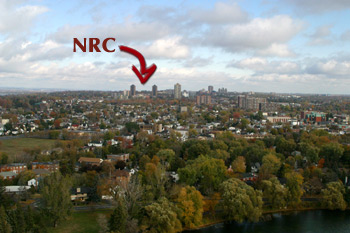 The National Research
Council (NRC) is one of few places I travel to more often than Toronto. And I’m lucky
that the NRC is barely seven kilometers from my house, rather than 500 as with Toronto. In
fact, from my balcony I can see a couple buildings on the NRC’s spacious campus --
one building nestled low among some trees, between but beyond two large apartment
buildings.
The National Research
Council (NRC) is one of few places I travel to more often than Toronto. And I’m lucky
that the NRC is barely seven kilometers from my house, rather than 500 as with Toronto. In
fact, from my balcony I can see a couple buildings on the NRC’s spacious campus --
one building nestled low among some trees, between but beyond two large apartment
buildings.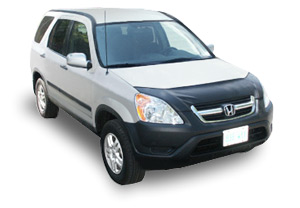 So finally, after two years of grumbling --
and realizing the speakers we were measuring most definitely weren’t getting smaller
-- I quit eating fast food, got a new girlfriend, and sold my Civic. It was a touching
goodbye to the pristine white fella -- not a hint of rust, even after eight years of
winter driving through salt-laden Ottawa roads -- but now the speakers get transported in
my much roomier Honda CR-V, complete with air conditioning and a multidisc
CD player (the stereo in my Civic was stolen five times before I simply went
without -- but that's another story). Certainly, the CR-V doesn’t get me to Toronto
as cheaply -- it costs about $35 now -- but I no longer get deep-fried along the way, and
the cargo room in the back allows me to mobilize all but the largest of loudspeakers. If I
ever buy a dog, I'll have room for it too.
So finally, after two years of grumbling --
and realizing the speakers we were measuring most definitely weren’t getting smaller
-- I quit eating fast food, got a new girlfriend, and sold my Civic. It was a touching
goodbye to the pristine white fella -- not a hint of rust, even after eight years of
winter driving through salt-laden Ottawa roads -- but now the speakers get transported in
my much roomier Honda CR-V, complete with air conditioning and a multidisc
CD player (the stereo in my Civic was stolen five times before I simply went
without -- but that's another story). Certainly, the CR-V doesn’t get me to Toronto
as cheaply -- it costs about $35 now -- but I no longer get deep-fried along the way, and
the cargo room in the back allows me to mobilize all but the largest of loudspeakers. If I
ever buy a dog, I'll have room for it too.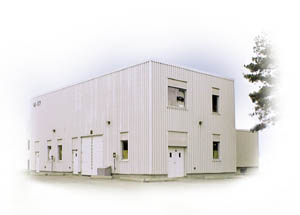 Webster’s definition of
anechoic is: "Free from echoes and reverberations." A chamber is obviously a
room of some sort. So an anechoic chamber is a room completely free of echoes and
reverberations -- the sound takes a one-way trip out of the loudspeaker and never comes
back. Why is this important? Because to understand how a speaker is launching its
soundwaves, you want to measure just the initial launch of those waves and not all
reflections that will occur in a real-world room. The concept is simple enough, but a
chamber is expensive to create -- in fact, very few loudspeaker companies even
have one of their own.
Webster’s definition of
anechoic is: "Free from echoes and reverberations." A chamber is obviously a
room of some sort. So an anechoic chamber is a room completely free of echoes and
reverberations -- the sound takes a one-way trip out of the loudspeaker and never comes
back. Why is this important? Because to understand how a speaker is launching its
soundwaves, you want to measure just the initial launch of those waves and not all
reflections that will occur in a real-world room. The concept is simple enough, but a
chamber is expensive to create -- in fact, very few loudspeaker companies even
have one of their own.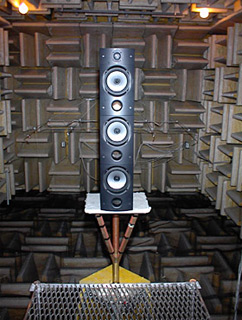 I stay out of the actual measurement process, but I do come
around to help out if the speaker is large and/or unwieldy since getting some onto this
platform can be a story in itself. And as I said, the speakers don't seem to be getting
any smaller, and this means I’m at the NRC more often -- although I notice that
it’s still Rene who ends up doing the bulk of the work when we’re lifting
something enormous!
I stay out of the actual measurement process, but I do come
around to help out if the speaker is large and/or unwieldy since getting some onto this
platform can be a story in itself. And as I said, the speakers don't seem to be getting
any smaller, and this means I’m at the NRC more often -- although I notice that
it’s still Rene who ends up doing the bulk of the work when we’re lifting
something enormous!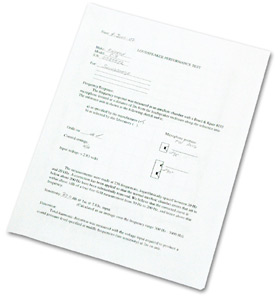 I remember the day that we first
announced that we were doing measurements at the NRC. Within hours I received a call from
a manufacturer who praised us immensely for taking such a bold step and producing accurate
data from such a well-respected institution -- finally, measurements done right!
He then told me that he thought we'd "be out of business in six months."
I remember the day that we first
announced that we were doing measurements at the NRC. Within hours I received a call from
a manufacturer who praised us immensely for taking such a bold step and producing accurate
data from such a well-respected institution -- finally, measurements done right!
He then told me that he thought we'd "be out of business in six months."